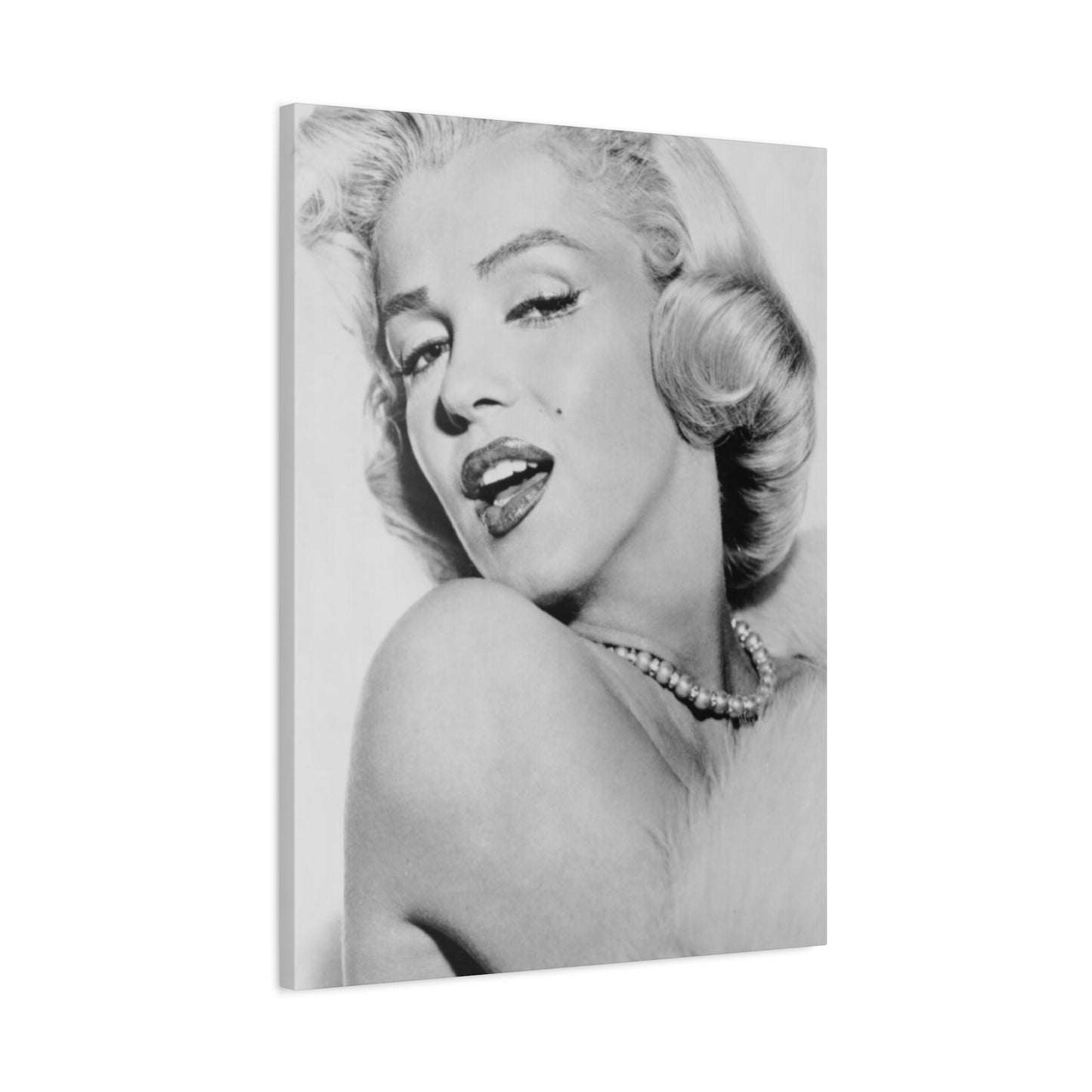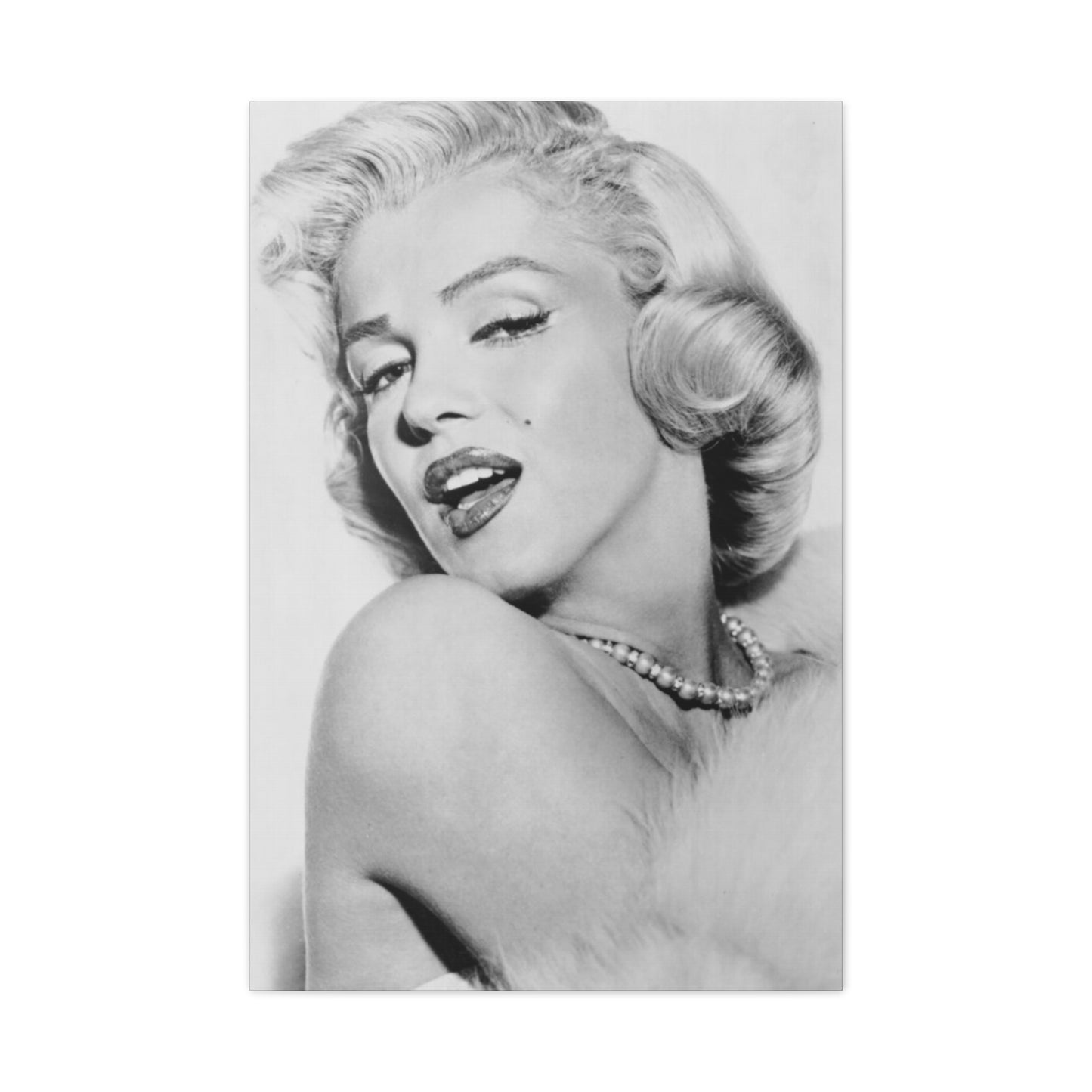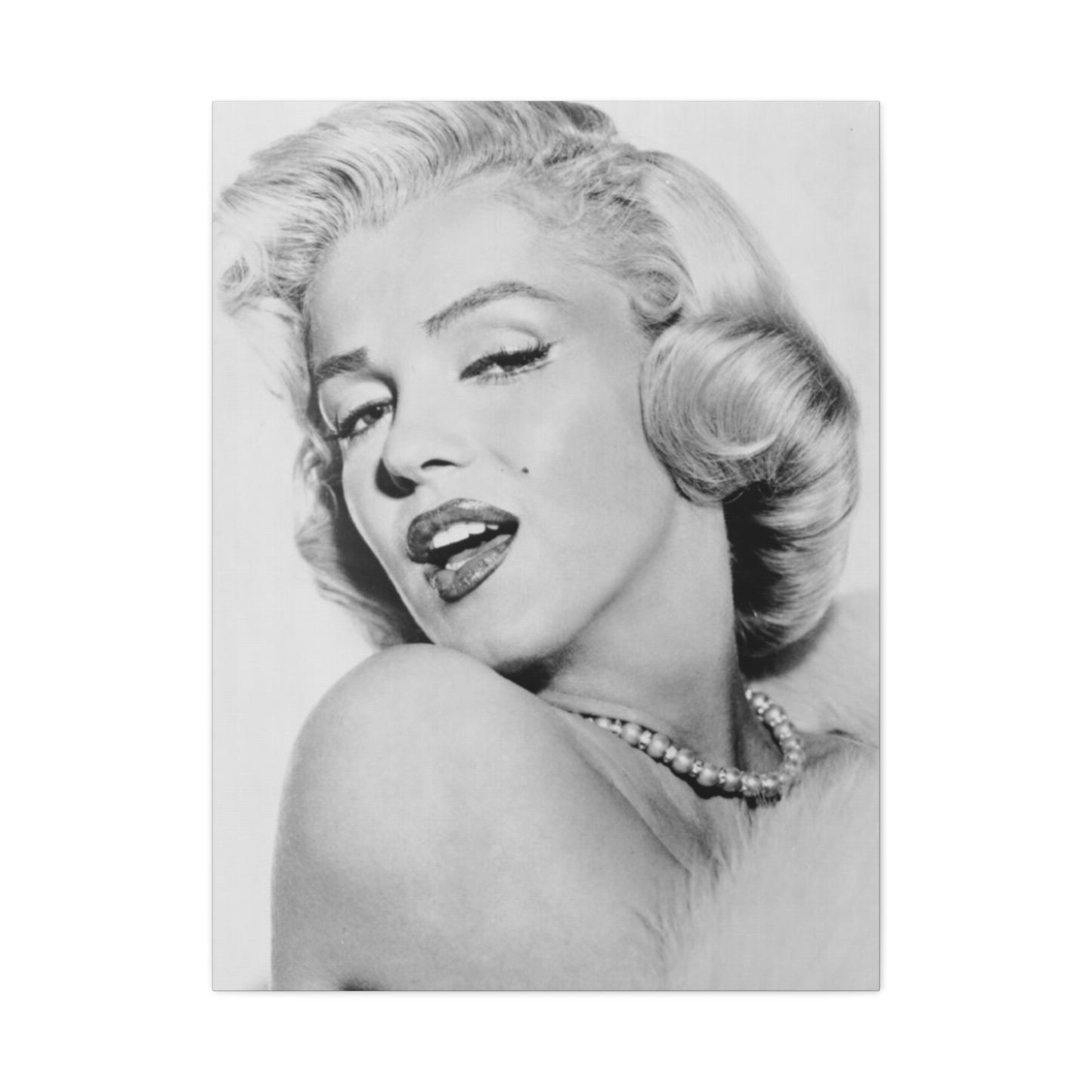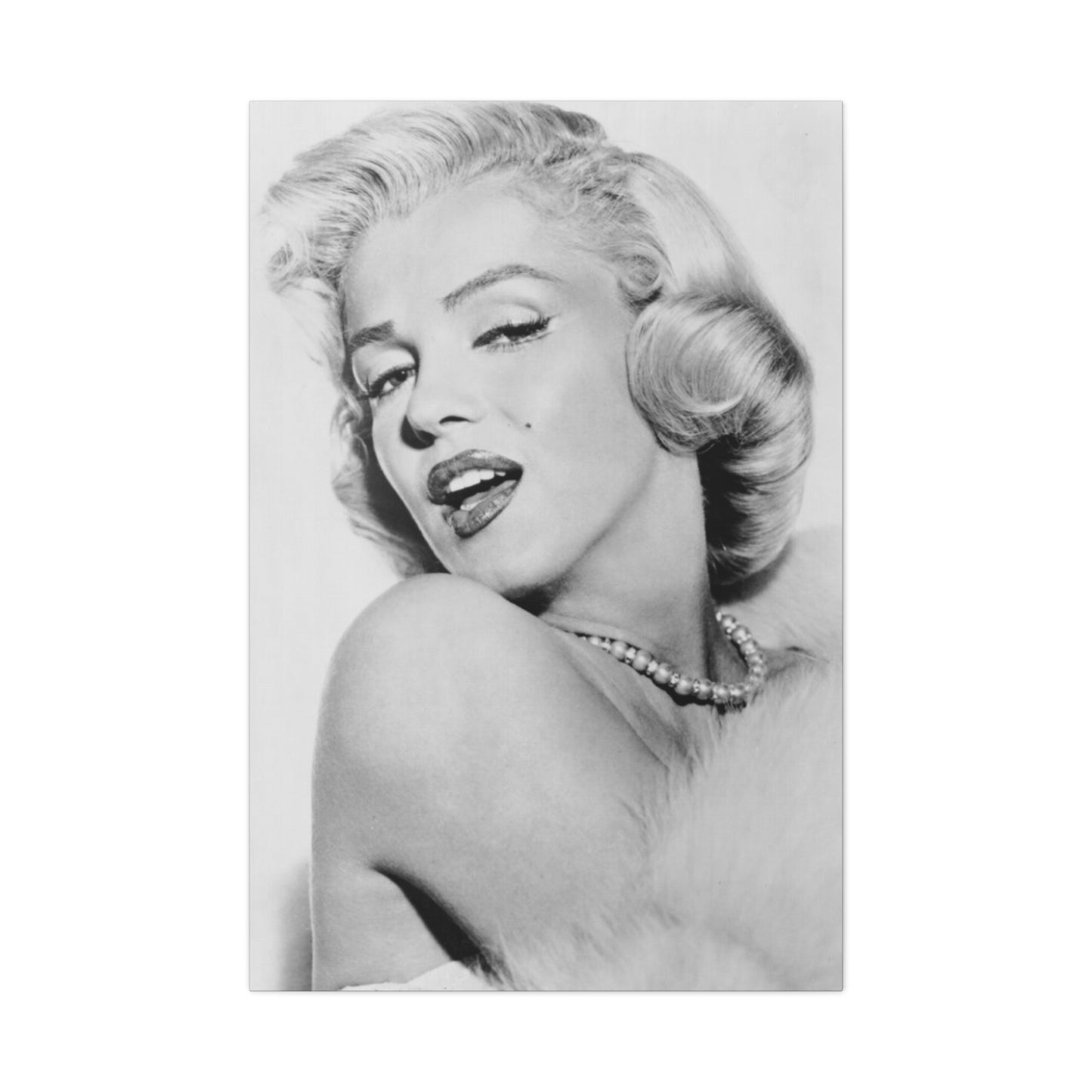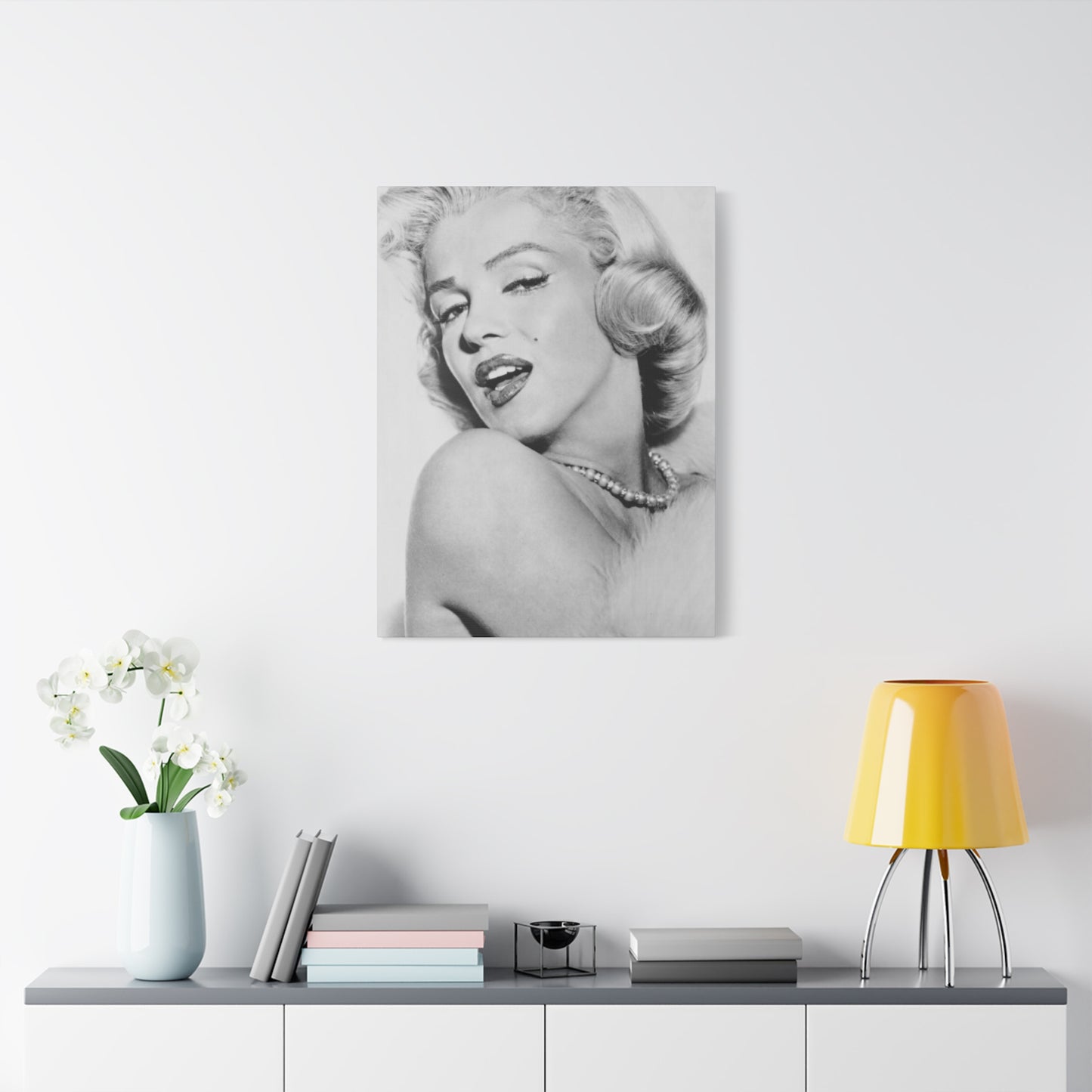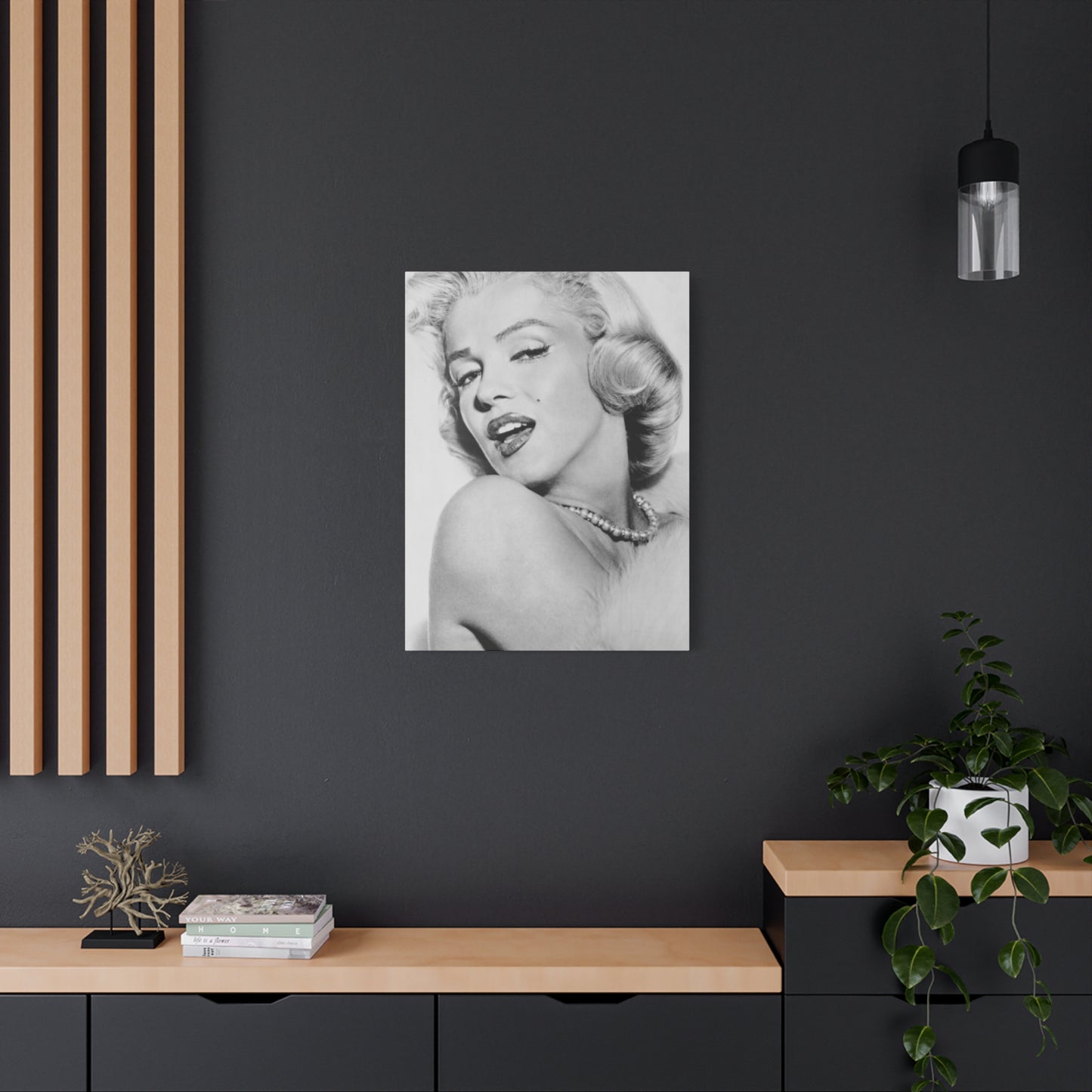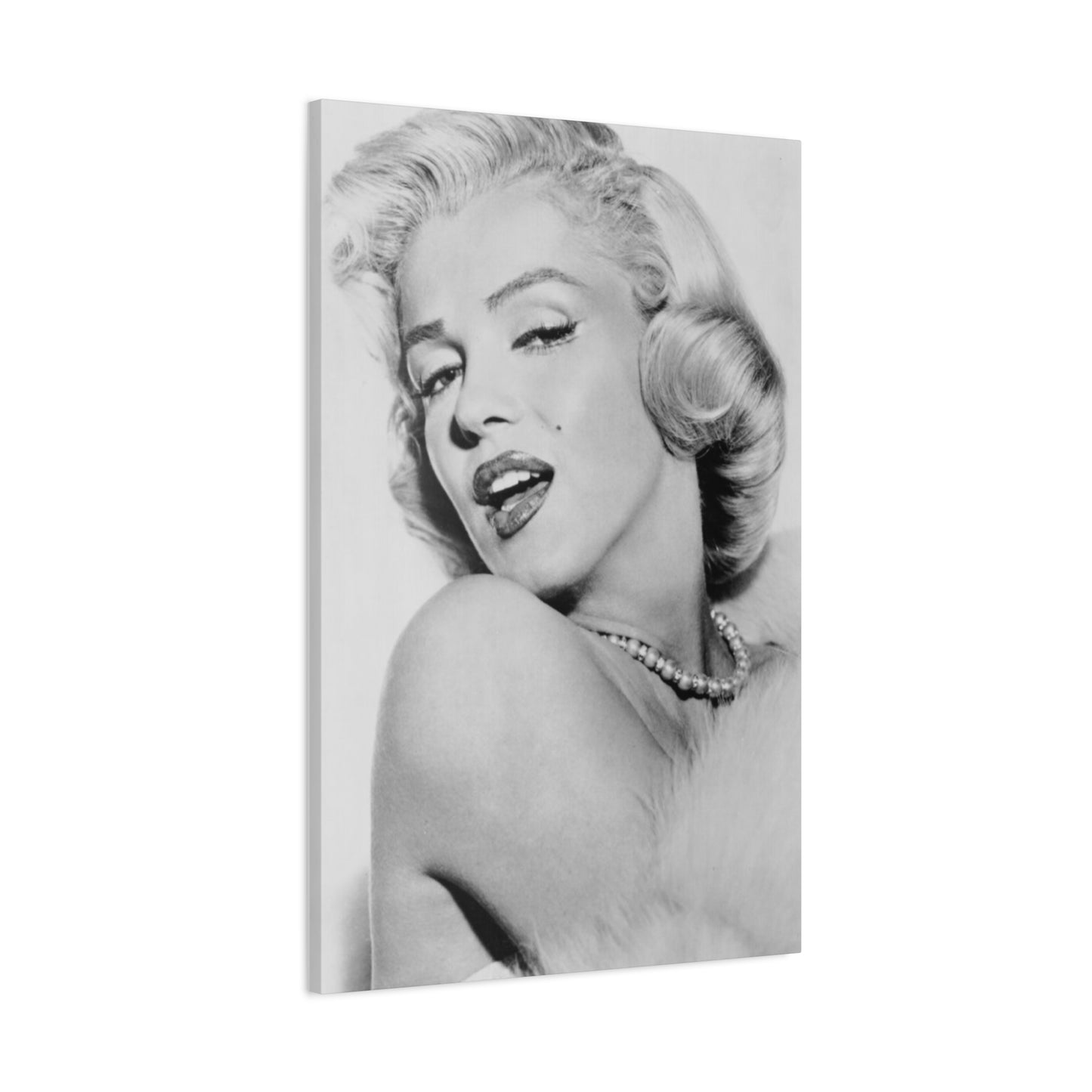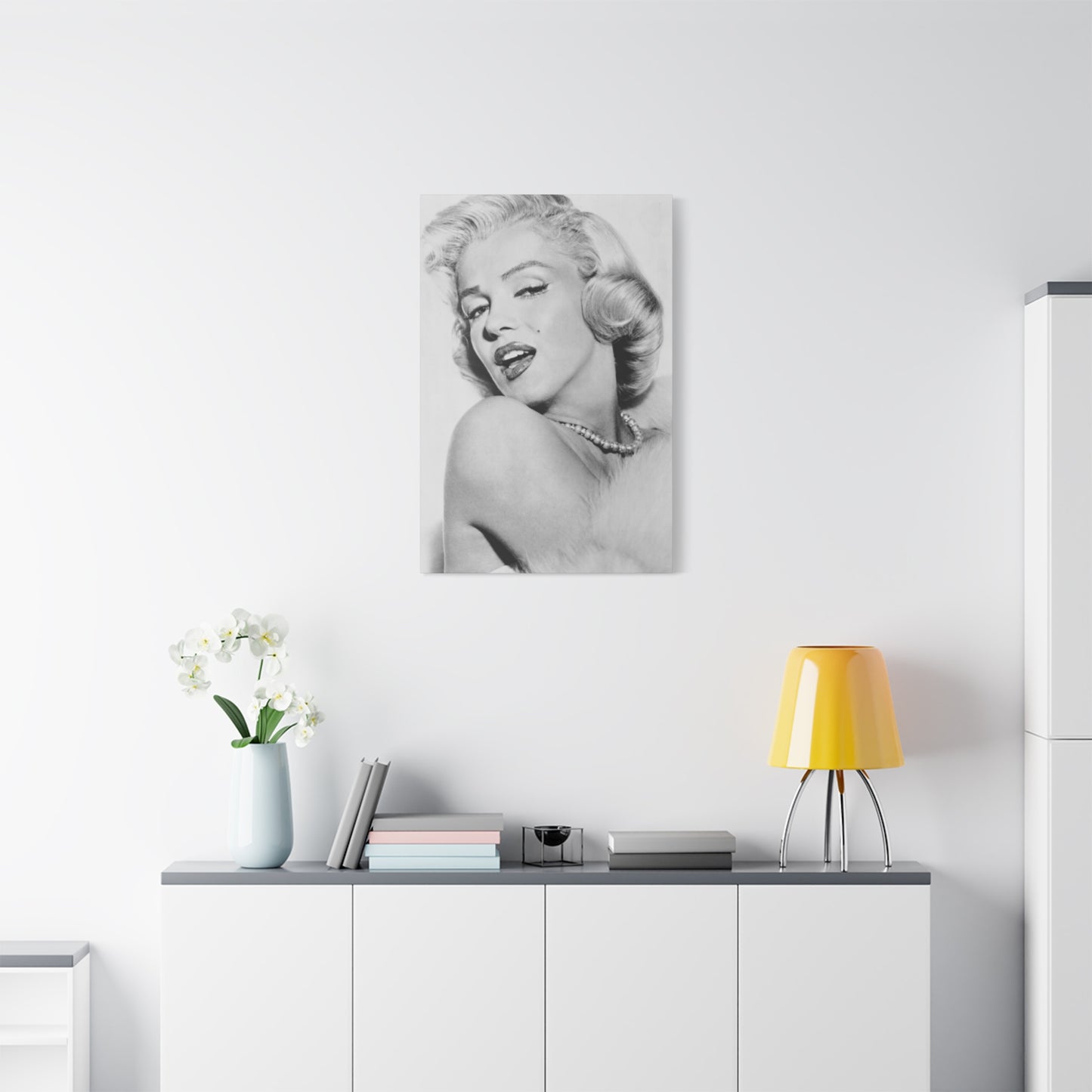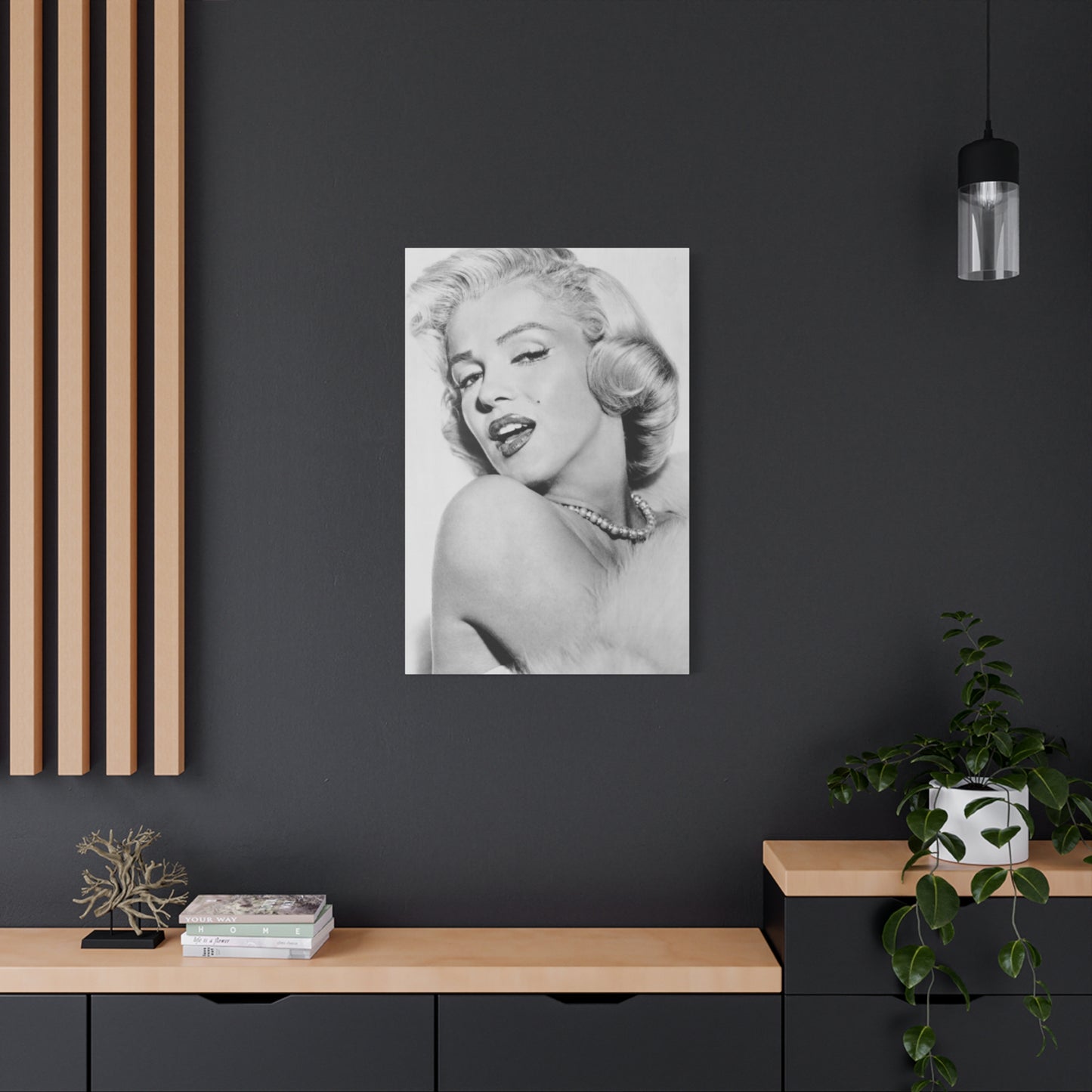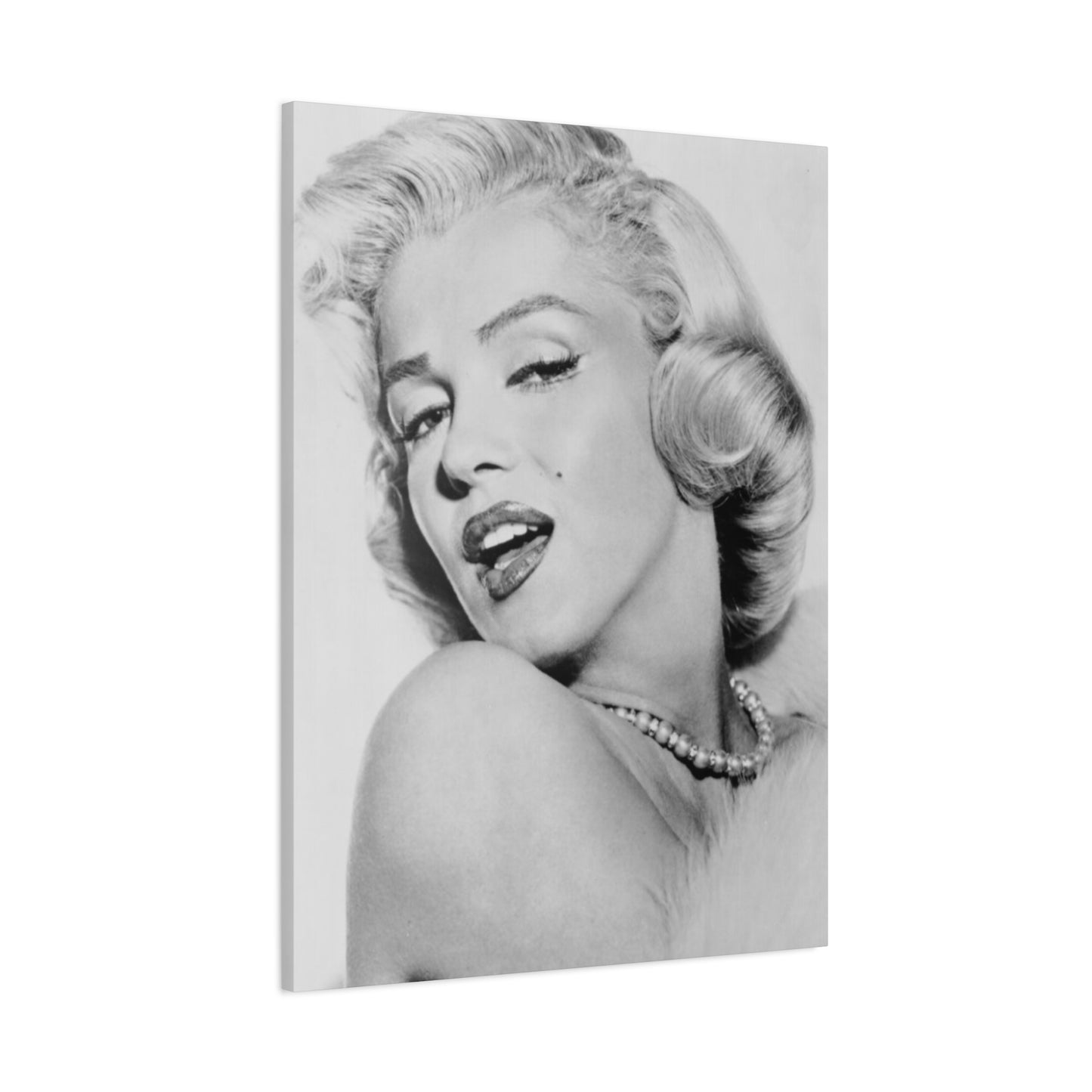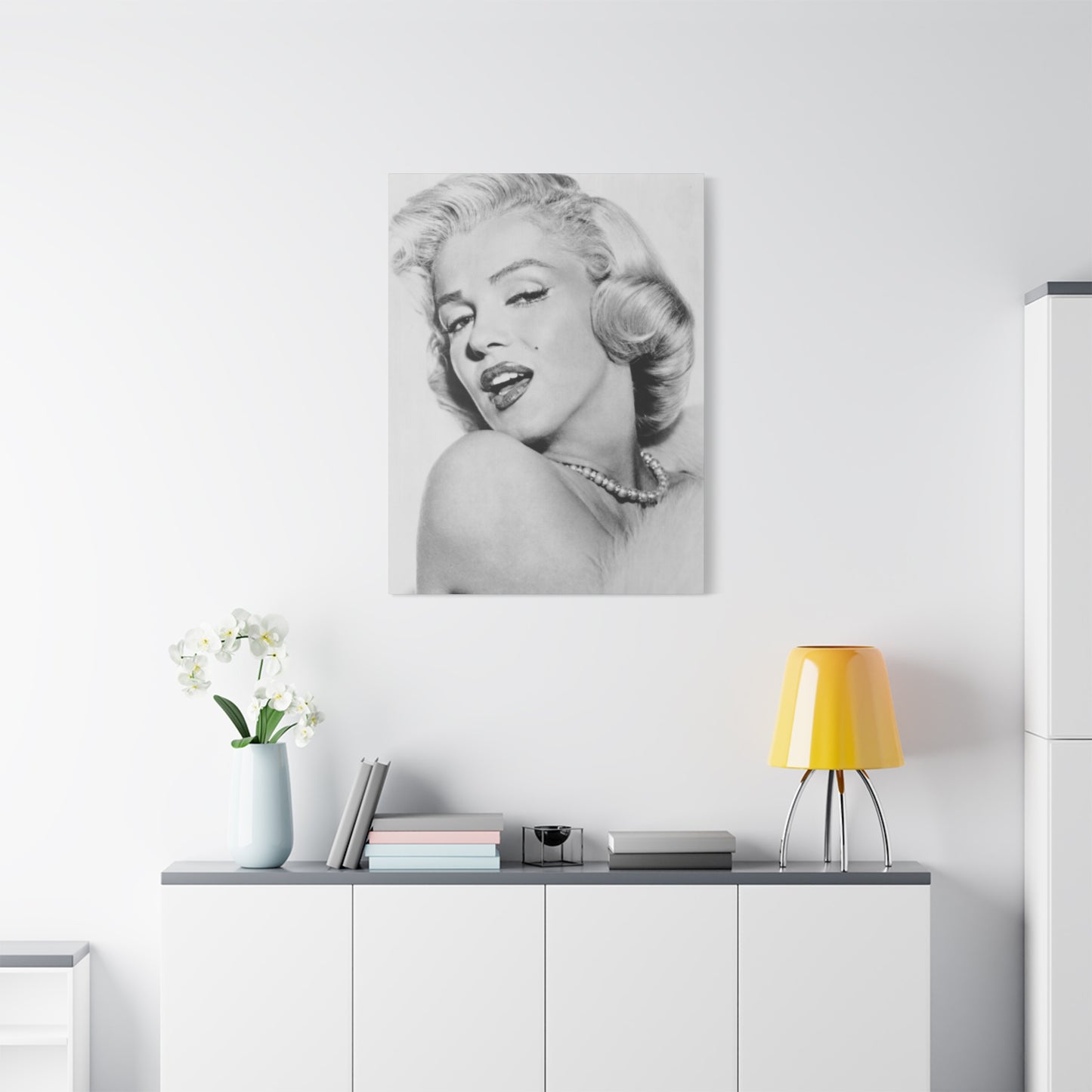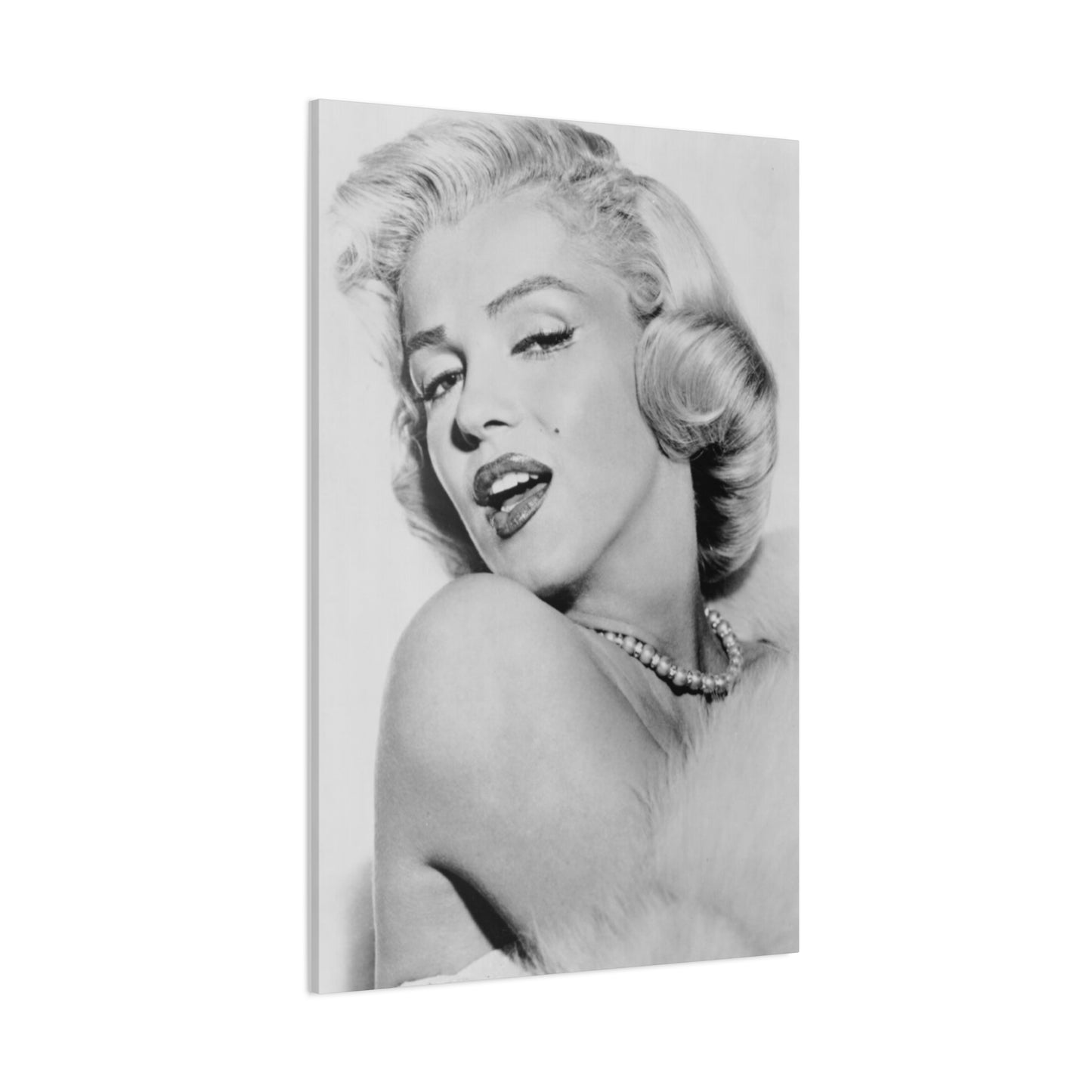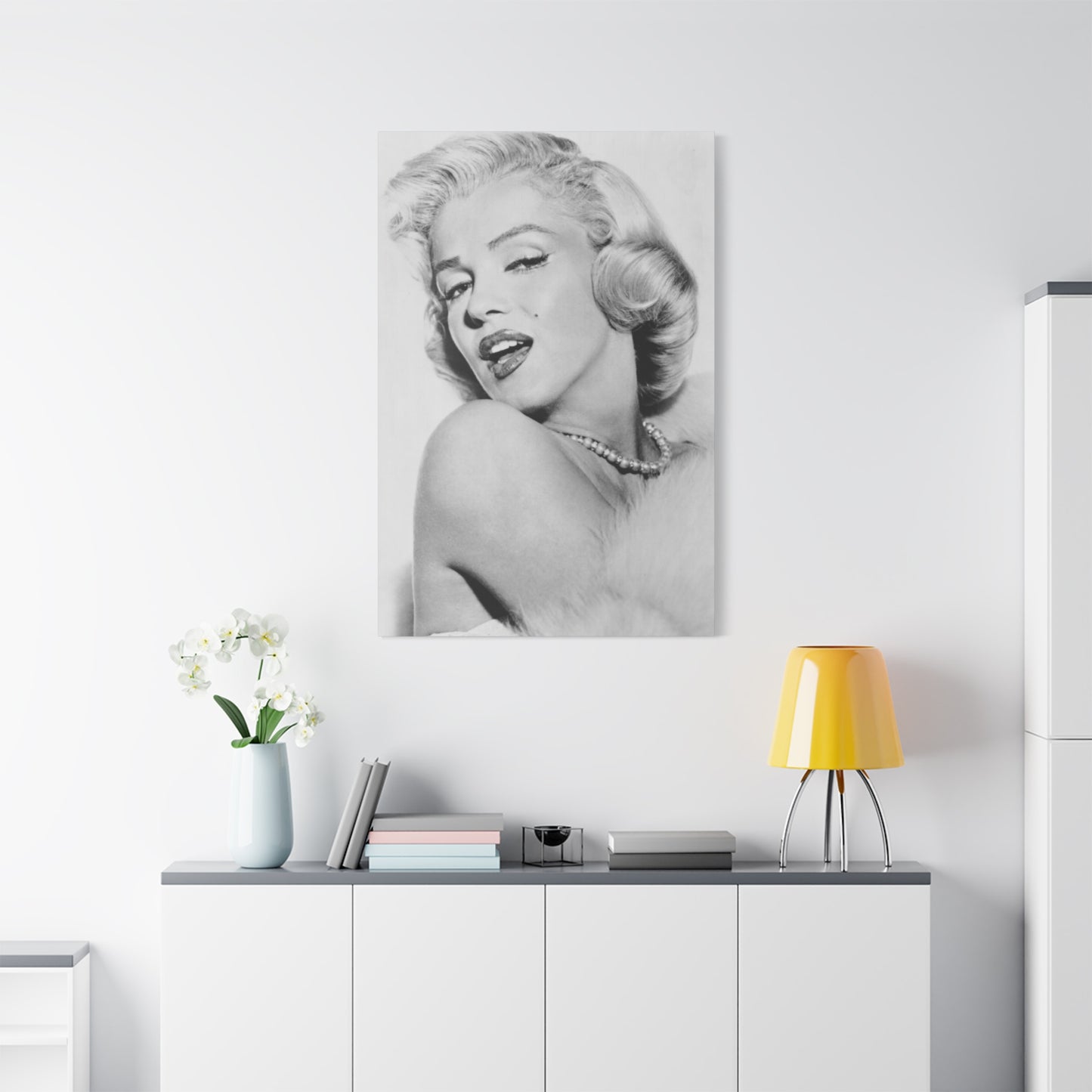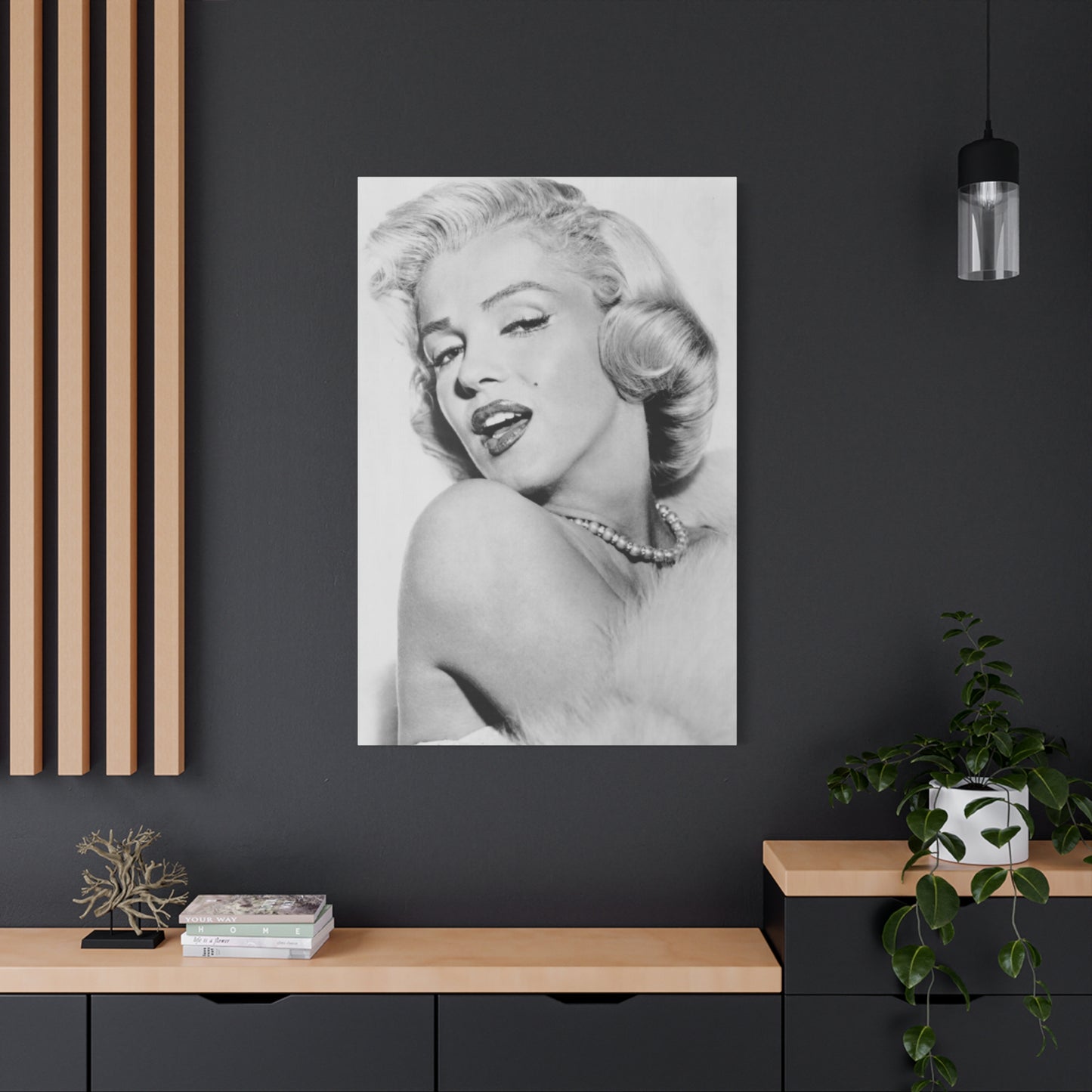Timeless Beauty: Marilyn Monroe Canvas Wall Art for Modern Home Decoration
The enduring appeal of classic Hollywood glamour continues to captivate art enthusiasts and interior designers worldwide. Among the most sought-after decorative pieces are sophisticated black and white portraits of legendary film icons that bring elegance and cultural significance to contemporary living spaces. These artistic representations serve as powerful focal points that bridge the gap between vintage aesthetics and modern design sensibilities, creating conversation-starting displays that reflect both personal taste and appreciation for cinematic history.
Canvas prints featuring iconic Hollywood figures have experienced remarkable growth in popularity over recent decades. The monochromatic treatment of these images adds a layer of sophistication and timelessness that colored versions simply cannot match. The absence of color forces viewers to focus on composition, contrast, lighting, and the subject's expression, creating a more intimate and emotionally resonant experience. This artistic approach transforms ordinary wall decoration into meaningful art pieces that elevate the entire atmosphere of a room.
The versatility of black and white canvas artwork makes it suitable for virtually any interior design scheme. Whether your home features contemporary minimalism, industrial chic, traditional elegance, or eclectic bohemian styling, monochromatic portraits integrate seamlessly while adding visual interest and cultural depth. These pieces work exceptionally well in living rooms, bedrooms, home offices, entertainment areas, and even commercial spaces like boutique hotels, upscale restaurants, and professional studios.
The Lasting Cultural Impact of Classic Hollywood Icons
The golden age of Hollywood produced personalities whose influence extends far beyond their film careers. These individuals became cultural phenomena, representing ideals of beauty, charisma, and artistic expression that continue resonating with audiences generations later. Their images have been reproduced countless times across various media, yet certain photographs retain their power to captivate and inspire.
Understanding why particular Hollywood figures maintain such enduring appeal requires examining their broader cultural significance. These icons transcended their roles as entertainers to become symbols of their era, embodying the dreams, aspirations, and contradictions of their time. Their personal stories, often marked by triumph and tragedy, add layers of meaning to their images that purely aesthetic appeal cannot explain.
The fascination with vintage Hollywood extends beyond nostalgia. Contemporary audiences recognize the artistry, craftsmanship, and authentic star quality that characterized this period. The photography techniques used during this era, combined with the distinctive styling and makeup approaches, created images with a quality and presence that modern photography often struggles to replicate. The deliberate use of lighting, shadow, and composition resulted in portraits that function as genuine art rather than simple celebrity snapshots.
When displayed as canvas prints in modern homes, these images create interesting dialogues between past and present. They remind viewers of entertainment history while simultaneously feeling fresh and relevant in contemporary contexts. This temporal flexibility makes them particularly valuable as decorative elements that won't feel dated as design trends evolve.
Aesthetic Advantages of Monochromatic Visual Art
The decision to display artwork in black and white rather than color involves more than nostalgic preference. Monochromatic imagery offers distinct aesthetic advantages that color photography cannot provide. The removal of color information fundamentally changes how viewers perceive and interact with images, often creating more powerful emotional responses and longer-lasting visual interest.
Black and white photography emphasizes form, texture, and tonal variation. Without the distraction of color, viewers naturally focus on composition, lighting quality, and the interplay between light and shadow. This creates a more meditative viewing experience that rewards closer examination. Details that might be overlooked in color photographs become prominent features in monochromatic presentations.
The contrast range available in black and white imagery contributes to its dramatic impact. The spectrum from pure white through various gray tones to deep black allows for striking visual effects that grab attention from across a room while maintaining sophistication upon closer viewing. This quality makes monochromatic canvas prints particularly effective as focal points in interior design schemes.
Monochromatic artwork also possesses remarkable versatility in coordinating with existing decor. While colored artwork must harmonize with the specific color palette of a room, black and white pieces complement virtually any color scheme. They can anchor neutral spaces, provide sophisticated contrast in colorful rooms, or contribute to monochromatic design themes without clashing with other elements.
The timeless quality of black and white imagery ensures longevity in your decorating investment. While color trends shift with fashion cycles, monochromatic art maintains its appeal across decades. A quality black and white canvas print purchased today will remain stylistically relevant for years to come, making it a smart choice for those who view home decoration as a long-term investment rather than temporary styling.
Creating Gallery Wall Arrangements with Multiple Prints
Single statement pieces create powerful impact, but arranged collections of multiple prints offer different aesthetic possibilities. Gallery walls allow for creative expression through curation, arrangement, and the relationships between individual pieces. Successfully executing this approach requires planning, patience, and attention to design principles that create cohesion rather than chaos.
Thematic consistency helps unify multiple pieces into a coherent collection. This might involve consistent color treatment, related subject matter, matching frame styles, or unified time periods. With black and white portraits, maintaining monochromatic treatment across all pieces provides inherent visual consistency even when subjects, sizes, or compositional approaches vary.
Layout planning prevents costly mistakes and unnecessary wall damage. Before hanging anything, arrange pieces on the floor in your intended configuration, or create paper templates matching each frame's dimensions and tape them to the wall. This allows experimentation with different arrangements until you achieve satisfying balance and spacing. Photograph your preferred layout for reference during installation.
Spacing between pieces affects the gallery wall's overall coherence. Consistent spacing between all frames creates formal, organized appearance, while varied spacing produces more casual, organic feel. Generally, maintaining two to three inches between frames provides sufficient separation to appreciate individual pieces while reading as a unified installation.
Anchor piece selection provides a starting point for arrangement. Identify your largest or most visually striking piece and position it first, typically near the center of your planned gallery wall. Arrange additional pieces around this anchor, balancing size, visual weight, and composition across the entire installation.
Symmetrical versus asymmetrical arrangements create different effects. Symmetrical layouts, with matching pieces on either side of a central axis, produce formal, traditional aesthetics suitable for conventional interiors. Asymmetrical arrangements feel more contemporary and dynamic but require careful attention to visual balance, ensuring no single area appears too heavy or sparse compared to others.
Complementary Interior Design Styles for Hollywood Glamour Art
While black and white canvas prints coordinate with virtually any decor, certain design styles particularly complement vintage Hollywood imagery. Understanding these affinities helps create cohesive interiors where artwork feels naturally integrated rather than awkwardly imposed. The goal is achieving environments where decorative elements support and enhance each other.
Art Deco styling naturally pairs with golden age Hollywood imagery, as both emerged from the same cultural era. The geometric patterns, luxurious materials, metallic finishes, and sophisticated color palettes characteristic of Art Deco design create perfect contexts for glamorous monochromatic portraits. Chrome frames, mirrored surfaces, and velvet upholstery amplify the vintage glamour aesthetic.
Mid-century modern design shares the clean lines and understated elegance that make black and white photography so appealing. The emphasis on simplicity, functionality, and organic forms in mid-century interiors provides excellent backdrops for monochromatic artwork. Warm wood tones, simple furniture silhouettes, and uncluttered spaces allow the artwork to command attention without competing visual elements.
Contemporary minimalism leverages black and white artwork as sophisticated focal points within pared-down spaces. The limited color palette of minimalist interiors finds perfect complement in monochromatic art, while the emphasis on quality over quantity aligns with the practice of displaying carefully selected statement pieces. In minimalist contexts, every element must justify its presence, and quality canvas prints easily meet this standard.
Industrial aesthetics benefit from the contrast between raw materials and refined artwork. Exposed brick, concrete, metal fixtures, and reclaimed wood create textural richness that balances beautifully with smooth, sophisticated canvas prints. The juxtaposition between rough and refined, industrial and artistic, creates dynamic tension that energizes spaces.
Traditional and transitional styles accommodate vintage Hollywood imagery through emphasis on classic elegance. Rich wood furnishings, traditional architectural details, and sophisticated fabric selections provide refined contexts where glamorous portraiture feels appropriately at home. In these settings, ornate frames and formal arrangements enhance the timeless quality of both the space and artwork.
The Investment Value of Quality Wall Art
Viewing home decoration as investment rather than mere expense changes purchasing decisions and satisfaction levels. Quality artwork, including premium canvas prints, represents investment in multiple dimensions beyond simple visual appeal. Understanding these value aspects helps justify the premium pricing of superior products over cheaper alternatives.
Emotional and psychological value constitute the primary returns on artwork investment. The daily pleasure of living with beautiful, meaningful art contributes to life quality in ways that transcend monetary measurement. This experiential value accumulates over years of ownership, making the cost per day of enjoyment remarkably low for durable, timelessly appealing pieces.
Aesthetic value enhances your entire living environment. Quality artwork elevates spaces from merely functional to genuinely beautiful, affecting how you feel within your home and how guests perceive your aesthetic sensibility. This environmental improvement influences mood, creativity, social interactions, and overall wellbeing in subtle but significant ways.
Durability determines long-term value retention. Premium canvas prints using archival materials and professional production methods remain beautiful for decades with minimal maintenance. Cheaper alternatives may fade, deteriorate, or develop structural problems within years, requiring replacement that makes their lower initial cost false economy. Quality pieces purchased once provide lasting value, while repeated replacement of inferior products costs more over time.
Resale value varies depending on the artwork's nature. While most mass-produced canvas prints won't appreciate monetarily, they retain functional value as long as they remain in good condition. More importantly, they provide value through use rather than speculation, similar to quality furniture or other home furnishings that justify their cost through performance rather than appreciation potential.
Maintenance and Care for Lasting Beauty
Proper maintenance preserves your artwork's appearance and extends its functional lifespan. Canvas prints require relatively minimal care compared to some other art forms, but attention to basic maintenance practices prevents common problems that diminish aesthetic appeal. A few simple habits protect your investment and ensure continued enjoyment.
Dust accumulation dulls artwork and can embed into canvas texture over time. Regular dusting using soft, dry cloths or gentle feather dusters prevents buildup. Always dust lightly in the direction of the canvas weave rather than against it to avoid snagging or distorting the material. For textured canvases, soft paintbrushes effectively remove dust from recessed areas without damaging the surface.
Cleaning beyond dusting requires caution to avoid damage. If cleaning becomes necessary, use barely damp, lint-free cloths and gentle pressure. Never apply cleaning solutions directly to canvas, as moisture can damage printed surfaces or cause canvas sagging. For stubborn marks, consult professional art conservators rather than attempting aggressive cleaning that might cause irreparable harm.
Environmental conditions significantly impact canvas longevity. Excessive humidity promotes mold growth and canvas sagging, while extremely dry conditions make canvas brittle. Maintaining relative humidity between forty and sixty percent protects most artwork. Avoid displaying canvas prints in bathrooms, laundry rooms, or other high-moisture environments unless specifically treated for such conditions.
Temperature extremes and fluctuations stress canvas and mounting materials. Avoid placing artwork near heating vents, fireplaces, radiators, or air conditioning units where temperature variations are pronounced. Stable, moderate temperatures preserve both canvas and printed images, preventing warping, cracking, or adhesive failure in mounting systems.
Sunlight exposure causes fading even with UV-protective coatings. While such treatments significantly slow deterioration, prolonged direct sunlight exposure will eventually affect any printed material. Position artwork where it avoids direct sun during peak intensity hours, or use window treatments to filter harsh sunlight while still allowing natural illumination.
Sizing Guidelines for Different Spaces
Selecting appropriate artwork dimensions requires considering room size, viewing distance, available wall space, and desired visual impact. Too-small pieces disappear in large spaces, while oversized artwork overwhelms small rooms. Understanding basic proportional relationships helps identify ideal sizes for specific locations.
Living room walls typically accommodate larger artwork given the spacious nature of these social areas. For walls measuring eight to twelve feet wide, canvas prints measuring thirty-six to sixty inches wide create substantial presence without overwhelming the space. Larger walls can support even bigger pieces or multiple-print arrangements. Consider the primary viewing distance when selecting size, as artwork viewed primarily from across the room benefits from larger dimensions than pieces examined from nearby.
Bedroom artwork often occupies walls above beds, where proportional relationships between furniture and art matter significantly. For queen-size beds, artwork measuring approximately fifty to sixty inches wide works well, while king-size beds accommodate pieces up to seventy inches wide. These proportions create balance rather than making the artwork appear awkwardly small or disproportionately large compared to the bed.
Dining room walls offer excellent opportunities for statement artwork visible during meals and entertaining. Pieces measuring thirty to forty-eight inches work well in most dining rooms, positioned at appropriate heights to remain visible over seated diners. The relatively formal nature of dining spaces suits sophisticated portraiture, making these rooms ideal locations for glamorous Hollywood imagery.
Home office spaces benefit from inspiring artwork that enhances focus and creativity. Depending on available wall space, pieces ranging from twenty-four to forty-eight inches suit most home offices. Consider positioning artwork within your line of sight during work to provide visual breaks and inspiration without causing distraction from primary tasks.
Hallways and entryways, often featuring limited width, suit narrower pieces or vertical orientations. Gallery-style arrangements of multiple smaller pieces work particularly well in hallways, creating visual interest throughout the length of the corridor. Entryways benefit from welcoming artwork that makes strong first impressions, setting the aesthetic tone for the entire home.
Color Psychology and Monochromatic Design Impact
The absence of color in black and white artwork creates specific psychological effects worth understanding. Color psychology research demonstrates how different hues influence mood and perception, but monochromatic imagery operates according to different principles that engage viewers in unique ways.
Black and white imagery evokes associations with history, memory, and timelessness. Our collective exposure to historical photographs primarily in monochrome creates mental connections between this aesthetic and the past. This association adds depth and gravitas to subjects, even when depicting relatively recent events or deliberately stylized contemporary photography.
The dramatic contrast possible in monochromatic work generates emotional intensity. The interplay between deepest blacks and purest whites, with tonal variations between, creates visual drama that commands attention and stirs feelings. This contrast-driven emotional response differs from color-based reactions, often feeling more sophisticated and contemplative than overtly colorful imagery.
Monochromatic art encourages sustained viewing and closer examination. Without color to provide immediate impact, viewers spend more time analyzing composition, studying facial expressions, and appreciating technical details. This extended engagement creates deeper connections between viewer and artwork, transforming casual glances into meaningful encounters.
The neutrality of black and white creates psychological versatility. Where colored imagery might evoke specific emotional associations tied to particular hues, monochromatic presentations allow viewers to project their own emotional interpretations more freely. This quality makes black and white artwork more personally adaptable, supporting various moods depending on the viewer's state of mind.
Simplicity and clarity characterize the monochromatic aesthetic. The reduction to essential elements, without color's potential distraction, creates sense of purity and directness. This simplicity appeals to contemporary sensibilities that value authenticity, minimalism, and meaningful rather than overwhelming visual experiences.
Modern Production Methods for Premium Canvas Prints
Contemporary production technology enables canvas print quality that previous generations could only imagine. Understanding these modern methods helps appreciate why premium products command higher prices and deliver superior results compared to budget alternatives. The gap between economy and premium production continues widening as technology advances.
Giclée printing represents the gold standard for fine art reproduction. This inkjet-based process uses microscopic droplets of archival pigment inks, capable of reproducing continuous tones and subtle color gradations with remarkable accuracy. Giclée printers typically use eight or more ink colors rather than standard four-color processes, enabling superior tonal range and color accuracy even in black and white images where gray tone reproduction matters greatly.
Color management systems ensure consistency between digital files and printed output. Professional production facilities use calibrated monitors, standardized color profiles, and regular testing to maintain accuracy. For black and white work, proper color management prevents unwanted color casts or tonal shifts that compromise the intended monochromatic aesthetic.
Canvas selection influences final appearance and longevity. Premium cotton canvas provides optimal ink absorption, color saturation, and archival stability. Poly-cotton blends offer increased durability and resistance to environmental factors while maintaining excellent print quality. Canvas weight, measured in ounces per square yard, indicates material substance, with heavier weights generally providing superior durability and less transparency.
Stretcher frame quality determines structural integrity and long-term stability. Kiln-dried solid wood frames resist warping and provide stable foundations for canvas mounting. Corner joinery should use proper woodworking techniques rather than simple butt joints, ensuring frames maintain square configurations under canvas tension. Cross-bracing on larger frames prevents bowing and maintains proper canvas tension across the entire surface.
Coating applications protect finished prints and enhance appearance. UV-resistant coatings block damaging ultraviolet radiation that causes fading, significantly extending display life even in naturally lit environments. Some coatings add subtle sheen or texture, allowing customization of the final aesthetic. Water-resistant treatments enable easier cleaning and protection against accidental moisture exposure.
Framing Options and Presentation Styles
The choice between framed and frameless presentation significantly impacts artwork's appearance and suitability for different design contexts. Both approaches offer advantages depending on aesthetic preferences, interior style, and practical considerations. Understanding these options helps select presentations that maximize your artwork's impact.
Gallery-wrapped canvas stretched over frames creates clean, contemporary presentations without additional framing. The printed image extends around the canvas edges, creating three-dimensional objects that appear complete from any angle. This frameless approach suits modern interiors and allows multiple pieces to hang closely together without frame interference. Gallery wrapping works particularly well for larger pieces where frames would add excessive visual weight.
Floating frames create modern, sophisticated presentations where canvas appears suspended within the frame with visible space between canvas edge and frame interior. This treatment adds definition and protection while maintaining contemporary aesthetic. Floating frames suit minimalist and modern interiors, providing subtle emphasis without the traditional heaviness of conventional frames.
Traditional frames with matting offer classic presentations that suit formal interiors and traditional design schemes. A white or cream mat surrounding the printed area creates buffer space between image and frame, preventing the artwork from feeling compressed. This approach works especially well for smaller prints that benefit from the visual expansion matting provides.
Black frames create strong contrast with white or light walls while coordinating beautifully with monochromatic imagery. The frame's darkness emphasizes the print's lighter tones and creates visual cohesion with the black elements within the image itself. Black frames suit contemporary, industrial, and transitional interiors, providing definition without calling excessive attention to themselves.
Natural wood frames introduce warmth and organic texture that balances the coolness of black and white photography. Light woods complement Scandinavian and coastal design styles, while darker woods suit traditional and transitional interiors. Wood grain adds subtle visual interest and connects artwork to other wooden elements within the room.
Metallic frames in silver, gold, or bronze create glamorous presentations that enhance Hollywood imagery's inherent elegance. These frames particularly suit Art Deco, Hollywood Regency, and maximalist design schemes where luxury and drama receive emphasis. Metallic finishes catch light dynamically, adding sparkle and movement to wall displays.
Thematic Collections and Curated Displays
Building themed collections around particular subjects, eras, or aesthetic approaches creates opportunities for sophisticated curatorial expression. Rather than randomly selecting disconnected pieces, thoughtful collection building demonstrates aesthetic vision and creates more impactful displays than isolated artworks achieve individually.
Era-focused collections might concentrate on particular decades, such as the nineteen forties or fifties, when distinctive photographic and styling aesthetics prevailed. Grouping prints from specific periods creates cohesive visual narratives that educate viewers about design evolution while maintaining stylistic consistency across multiple pieces.
Genre-based collections organize artwork around particular film types or character archetypes. A collection focused on film noir might emphasize dramatic lighting, mysterious expressions, and the dark glamour associated with this genre. Musical film stars could form another collection, perhaps incorporating images that suggest performance energy and theatrical personality.
Photographer-focused collections showcase the work of particular artists who photographed Hollywood subjects. While individual photographers may not receive prominent public recognition, serious collectors appreciate distinctive artistic visions and technical approaches that characterize particular photographers' bodies of work.
Mood-based curation selects images conveying similar emotional qualities regardless of subject or era. A collection emphasizing quiet contemplation might include pensive portraits sharing introspective qualities. Alternatively, energetic collections might feature dynamic poses, bright expressions, and compositions suggesting movement and vitality.
Formal element collections organize artwork by compositional similarities rather than subject matter. Collections might emphasize profile views, direct-gaze portraits, or particular lighting patterns. This approach creates subtle visual rhythms across multiple pieces while allowing diverse subjects and creating interest through variation within consistent formal structures.
Shopping Considerations and Vendor Selection
Purchasing canvas prints requires evaluating multiple factors beyond price to ensure satisfaction with quality, authenticity, and customer experience. The marketplace includes diverse vendors ranging from mass producers to specialized galleries, each offering different value propositions. Informed shopping protects against disappointment and ensures your investment meets expectations.
Vendor reputation provides valuable quality indicators. Research potential sellers through customer reviews, industry recognition, and longevity in the marketplace. Established vendors with consistently positive feedback and professional presentation inspire greater confidence than unknown entities with limited track records. However, newer specialized sellers sometimes offer superior products compared to larger, established competitors focused more on volume than quality.
Product descriptions revealing technical specifications help assess quality. Detailed information about printing methods, ink types, canvas materials, frame construction, and protective coatings indicates professional operations committed to quality. Vague descriptions lacking specific details often signal lower-quality products or vendors unfamiliar with production processes.
Sample viewing opportunities, whether through physical showrooms, high-quality photography, or generous return policies, reduce purchase risk. The ability to examine products before commitment, or return items that don't meet expectations, demonstrates vendor confidence in their offerings and respect for customer satisfaction.
Licensing and authenticity concerns matter particularly for celebrity imagery where rights management affects legal product availability. Reputable vendors ensure proper licensing for reproduced images, protecting customers from potential legal issues associated with unauthorized reproductions. Questions about image sourcing and licensing should receive clear, confident responses from legitimate sellers.
Customization options add value by allowing personalization to your specific needs. The ability to select sizes, add custom framing, adjust image cropping, or request specific production specifications ensures finished products perfectly suit your requirements rather than forcing compromise with standard offerings.
Pricing transparency including clear information about shipping costs, taxes, and any additional fees prevents unpleasant surprises during checkout. Hidden costs that substantially increase final prices beyond advertised rates indicate questionable business practices. Legitimate vendors present complete pricing information upfront, allowing accurate cost comparison across different sellers.
Alternative Display Methods Beyond Traditional Hanging
While wall hanging remains the standard artwork display method, alternative approaches offer creative possibilities suited to particular spaces or design visions. Exploring unconventional display methods can solve practical challenges or create unique aesthetic effects that distinguish your interior from conventional approaches.
Leaning large canvas prints against walls rather than hanging them creates casual, gallery-style presentations. This approach works particularly well with oversized pieces that might otherwise require elaborate hanging hardware. Leaning art suits bohemian, eclectic, and contemporary interiors where relaxed, informal aesthetics feel appropriate. Layering multiple leaned pieces creates dimensional displays with artistic, curated appearances.
Easel displays transform canvas prints into freestanding decorative objects suitable for tabletops, shelves, or floor placement. Decorative easels range from simple metal designs to elaborate wooden constructions, offering various aesthetic options. This approach suits spaces where wall hanging isn't possible or desirable, and allows easy artwork rotation without repeated wall mounting.
Shelf ledge systems designed specifically for artwork display enable easy rearrangement and layering possibilities. Narrow ledges mounted at appropriate heights accommodate multiple pieces that lean against the wall while resting on the ledge. This system facilitates seasonal rotations or frequent changes without new holes in walls, appealing to those who enjoy regularly refreshing their displays.
Track and cable hanging systems provide commercial gallery flexibility in residential settings. Ceiling-mounted tracks with adjustable cables allow precise positioning and height adjustment without wall damage. These systems particularly suit renters or those who frequently reconfigure displays, as artwork moves freely along tracks and adjusts vertically via cable systems.
Room divider applications use large canvas prints as functional architectural elements that define spaces while providing visual interest. Freestanding frames with canvas prints mounted on both sides create attractive partitions suitable for open-plan spaces requiring subtle division without solid walls. This application works well in lofts, studios, or large rooms benefiting from suggested separation between different functional zones.
Lighting Techniques That Enhance Artwork Presentation
Proper illumination dramatically affects how artwork appears and the attention it receives. Strategic lighting approaches enhance visual impact, reveal details, and create dramatic effects that elevate ordinary displays into striking presentations. Understanding basic lighting principles enables effective home implementation without professional installation.
Picture lights mounted directly to frames or walls above artwork provide focused illumination that highlights displays while adding decorative interest. LED picture lights offer energy efficiency and low heat output that protects artwork from thermal damage. Adjustable models allow beam angle customization, ensuring even illumination across the entire canvas surface without hot spots or dark areas.
Track lighting systems provide flexible solutions for illuminating multiple artworks or changing displays. Individual fixtures along ceiling-mounted tracks direct toward specific pieces, with adjustment possibilities as artwork positions change. This flexibility suits gallery walls or spaces where displays evolve over time, avoiding permanent installation limitations of fixed lighting.
Recessed ceiling spotlights create clean, unobtrusive illumination without visible fixtures competing for attention. Aimed precisely at artwork, these create dramatic downlighting effects that emphasize displays while maintaining minimal aesthetic interference. Dimmable installations allow intensity adjustment matching different times of day or desired ambiance levels.
Wall washing techniques use indirect lighting to illuminate entire walls uniformly, creating subtle displays where artwork integrates seamlessly into overall room lighting rather than standing out through individual spotlighting. This approach suits minimalist interiors prioritizing environmental cohesion over dramatic focal points.
Natural light management balances beneficial illumination against potential fading damage. Sheer curtains filter harsh direct sunlight while maintaining luminosity. UV-filtering window films block damaging radiation while transmitting visible light. Strategic positioning places artwork where it receives indirect natural light during daytime, providing beautiful illumination without concentrated exposure that accelerates deterioration.
Smart lighting systems incorporating programmable controls, color temperature adjustment, and automated scheduling maximize illumination effectiveness while protecting artwork. Morning and evening light temperature variations can complement natural light changes, maintaining consistent appearance throughout the day. Automated dimming during brightest hours reduces total light exposure while maintaining visibility.
Historical Evolution of Canvas as Art Medium
Canvas emerged as an artistic medium during the Renaissance, gradually replacing wooden panels as artists' preferred painting support. Understanding this evolution provides context for why canvas remains popular for contemporary art reproduction and helps appreciate the medium's technical and aesthetic properties.
Early canvas consisted of woven linen derived from flax plants, providing durable yet flexible surfaces that accepted paint beautifully. The relatively lightweight nature compared to wooden panels facilitated larger artworks and easier transportation, contributing to canvas adoption across Europe during the fifteenth and sixteenth centuries.
Preparation techniques involved sizing canvas with animal glue to seal fibers, then applying gesso ground layers creating smooth, absorbent surfaces for paint application. These preparation methods prevented paint from absorbing directly into canvas fibers while creating ideal working surfaces for various painting techniques.
Canvas tension and stretching methods evolved to maintain flat, stable surfaces despite material flexibility. Wooden stretcher frames with corner keys allowing tension adjustment became standard, enabling artists to tighten canvas as environmental conditions caused expansion or contraction. These systems remain largely unchanged in contemporary canvas stretching.
Modern canvas production involves both natural and synthetic fibers. Traditional linen and cotton canvases continue serving fine art applications, while polyester and poly-cotton blends offer enhanced durability and environmental resistance for commercial applications. Contemporary manufacturing achieves consistent quality unattainable with historical hand-woven materials.
The adaptation of canvas to photographic reproduction represents relatively recent innovation. Treating canvas with specialized coatings enables ink absorption and adhesion, creating surfaces suitable for inkjet printing while maintaining traditional canvas texture and appearance. This marriage of ancient medium and modern technology enables today's canvas print industry.
Photographic Techniques Behind Iconic Portraits
The technical mastery evident in classic Hollywood photography represents the culmination of decades of photographic development and artistic experimentation. Understanding the techniques employed reveals how photographers created the distinctive aesthetic that continues influencing contemporary portraiture and inspiring artistic admiration.
Lighting configurations using multiple sources positioned at specific angles created the dimensional modeling that gives classic portraits their sculptural quality. Key lights provided primary illumination, typically positioned forty-five degrees from the subject at elevated angles. Fill lights reduced shadow density without eliminating them entirely, maintaining dimensional definition while controlling contrast. Rim or hair lights separated subjects from backgrounds, adding depth and highlighting hair texture.
Soft focus techniques employed specialized lenses or filtration creating slightly diffused images that minimized skin imperfections while maintaining overall sharpness. This approach, sometimes called Hollywood glamour focus, produced the flattering quality characteristic of studio portraiture. Photographers carefully controlled diffusion degree, avoiding excessive softness that would appear blurry while achieving desired smoothing effects.
Camera formats using large film negatives allowed exceptional detail capture and tonal gradation. Four-by-five inch or larger view cameras provided resolution enabling enlargements without visible grain or quality loss. The large format allowed extensive control over focus planes through lens movements, though the technical complexity required expertise and careful execution.
Film selection influenced tonal rendering and contrast characteristics. Different film stocks possessed unique sensitivity curves affecting how they translated subject brightness ranges into negative densities. Photographers selected films matching their intended aesthetic, with some favoring high contrast for dramatic effects while others preferred gentler gradations enabling subtle tonal modeling.
Exposure control determined how light recorded on film, affecting overall brightness and contrast. The zone system developed by Ansel Adams provided methodical approach to exposure determination and development control, enabling photographers to pre-visualize how scenes would render as finished prints. While primarily associated with landscape photography, these principles applied equally to studio portraiture.
Retouching techniques applied to negatives or prints corrected imperfections and enhanced features. Skilled retouchers using fine brushes, pencils, and chemical treatments could subtly modify images, smoothing skin, enhancing eyes, and perfecting appearances while maintaining natural appearance. This analog retouching required remarkable skill and patience compared to contemporary digital editing.
Print development techniques affected final image tonality and contrast. Darkroom workers controlled development time, temperature, and chemical formulations to achieve specific aesthetic effects. Dodging selectively reduced exposure in certain areas while burning increased exposure elsewhere, allowing precise control over local tonality within the overall image. Split-toning processes using different toners created subtle color variations within monochromatic prints.
Cross-Cultural Perspectives on Icon Veneration
The practice of displaying images of admired public figures connects to deeper human impulses spanning cultures and historical periods. Examining these cross-cultural patterns provides context for contemporary practices of displaying celebrity imagery, revealing commonalities underlying superficially different traditions.
Religious icon traditions in Orthodox Christianity, Catholicism, Buddhism, and Hinduism demonstrate long-standing human practices of surrounding ourselves with images of venerated figures. While contemporary celebrity imagery serves secular rather than religious functions, structural similarities exist in how displayed images remind viewers of admired qualities, inspire devotion or emulation, and create sacred or special spaces within domestic environments.
Ancestral portraiture traditions across many cultures demonstrate universal impulses to maintain visual connections with significant figures from the past. Whether Chinese ancestral tablets, European painted portraits, or photographic displays in contemporary homes worldwide, humans consistently create visual shrines honoring those we consider important. Celebrity displays function similarly, honoring cultural rather than genetic ancestors who shaped collective rather than family identity.
Political leader imagery in public and private spaces worldwide shows how images of admired or required figures occupy environmental space across cultures. From officially mandated portraits in authoritarian societies to voluntarily displayed campaign posters in democracies, political imagery demonstrates how faces representing ideals, movements, or identities become environmental features shaping daily visual experience.
Cultural hero worship manifests differently across societies but consistently involves visual representation. Warriors, scholars, artists, and spiritual teachers receive commemoration through imagery displayed in contexts ranging from government buildings to private homes. Contemporary entertainment figures represent modern iteration of this eternal pattern, with display methods adapting to current aesthetic preferences while serving similar psychological and cultural functions.
Commercial versus authentic devotion tensions appear cross-culturally as image reproduction and distribution become commercialized. Questions about authentic veneration versus superficial consumption apply equally to religious icons mass-produced for tourist markets and celebrity imagery marketed as home decoration. The line between meaningful display and hollow consumerism remains individually determined across cultural contexts.
Integration of secular and sacred blur in contemporary practice as traditional religious observance declines in many societies while human needs for meaning, inspiration, and connection to something greater persist. Celebrity and cultural icon display may partially fill roles formerly occupied by religious imagery, providing inspiration, beauty, and connection to cultural narratives that give life meaning beyond immediate material existence.
The Role of Artwork in Establishing Home Atmosphere
Beyond purely decorative functions, displayed artwork significantly influences overall home atmosphere affecting mood, energy levels, and emotional experience of spaces. Strategic artwork selection and placement can intentionally shape environmental character supporting desired lifestyles and emotional needs.
Calming atmospheres benefit from artwork conveying serenity through subject expressions, composition, and tonal qualities. Gentle contrasts rather than harsh blacks, serene facial expressions, and simple compositions create peaceful environments supporting relaxation and restoration. Such atmospheric choices particularly suit bedrooms, reading areas, and meditation spaces where tranquility represents primary goal.
Energizing environments employ dynamic compositions, strong contrasts, and vital expressions inspiring activity and engagement. Artwork suggesting movement, intensity, or drama generates environments supporting productivity, creativity, and social interaction. These qualities suit home offices, exercise spaces, and social entertaining areas where stimulation proves more appropriate than relaxation.
Sophisticated elegance emerges through refined subject matter, quality production, and careful curation demonstrating aesthetic discernment. Classic Hollywood imagery naturally suits elegant atmospheres through inherent glamour and cultural sophistication. Combined with quality framing and thoughtful placement, such artwork establishes environments feeling polished and culturally aware.
Intimate cozy atmospheres develop through personally meaningful artwork creating emotional warmth and authentic self-expression. Pieces connecting to personal history, cherished memories, or deep aesthetic preferences generate environments feeling uniquely personal rather than generically decorated. This authenticity contributes significantly to psychological comfort within private spaces.
Inspiring motivational environments result from displaying imagery representing admired qualities or achieved excellence. Figures embodying creativity, determination, elegance, or other valued characteristics serve as daily inspiration when displayed in frequently occupied spaces. This functional dimension transforms decoration into meaningful environmental design supporting personal development goals.
Nostalgic commemorative atmospheres honor past eras, cultural moments, or personal histories through artwork selection. Vintage Hollywood imagery naturally evokes nostalgia for golden age entertainment, creating environments connecting present living situations to cherished cultural history. This temporal bridging adds depth and meaning to everyday spaces.
Commercial Applications Beyond Residential Use
While primarily discussed in residential contexts, canvas prints featuring classic Hollywood imagery serve diverse commercial applications where aesthetic appeal, cultural recognition, and atmosphere creation provide business value. Understanding these commercial uses reveals the versatility and broad appeal of quality monochromatic portraiture.
Hospitality businesses including boutique hotels, bed and breakfasts, and vacation rentals use themed artwork creating memorable distinctive atmospheres differentiating their properties from generic competitors. Hollywood glamour themes prove particularly popular in boutique establishments targeting style-conscious travelers seeking unique accommodations reflecting cultural sophistication rather than standardized chain hotel anonymity.
Restaurant and bar decoration frequently employs vintage Hollywood imagery establishing sophisticated, slightly theatrical atmospheres appropriate for dining and entertainment experiences. Classic portraiture coordinates well with diverse culinary concepts from retro diners to upscale cocktail lounges, providing visual interest and conversation starting potential enhancing overall guest experience.
Retail environments particularly in fashion, beauty, and lifestyle sectors use glamorous imagery reinforcing brand positioning and aspirational associations. Display windows and interior spaces featuring iconic Hollywood portraits communicate elegance, timeless style, and cultural awareness aligning with premium brand identities. The imagery's recognizability creates instant impact and brand story communication.
Professional offices in creative industries including advertising agencies, design studios, media companies, and entertainment businesses display Hollywood artwork reinforcing cultural connections and creative credibility. Such decoration demonstrates industry knowledge and aesthetic sophistication while creating inspiring environments for creative work.
Salon and spa settings employ glamorous imagery creating atmosphere supporting beauty and self-care services. Classic Hollywood portraits embody ideals of beauty, glamour, and transformation central to these businesses' value propositions. The artwork reinforces brand messaging while providing visually appealing environments for service delivery.
Event spaces and venues hosting weddings, parties, and corporate functions use themed artwork creating appropriate atmospheres for celebrations. Hollywood glamour themes remain popular for special events, with venue decoration establishing mood and providing photo-worthy backdrops for guest photography. Permanent or rotating artwork installations allow venues to offer thematic variety meeting diverse client preferences.
Photography studios and portrait businesses display classic examples of photographic excellence demonstrating technical mastery and artistic vision. Hollywood portraits represent pinnacle achievements in portrait photography, inspiring both photographers and subjects while establishing studios' commitment to quality and awareness of photographic heritage.
Conclusion:
The enduring popularity of black and white canvas prints featuring classic Hollywood icons reflects multiple converging factors including aesthetic appeal, cultural significance, decorative versatility, and psychological resonance. These elements combine creating artwork that transcends temporary trends while satisfying diverse needs across different contexts and personal preferences. As we have explored throughout this extensive examination, the decision to incorporate such pieces into living spaces involves considerations extending far beyond simple decoration.
The aesthetic power of monochromatic imagery lies in its ability to focus viewer attention on essential elements without the potential distraction of color. This concentrated visual experience rewards sustained viewing, revealing details and subtleties that might otherwise go unnoticed. The dramatic contrast possibilities in black and white work create striking visual impact while maintaining sophistication, making these pieces appropriate for formal and casual settings alike. The timeless quality inherent in monochromatic treatment ensures that contemporary purchases will remain stylistically relevant for decades, representing smart investments in home beautification that won't require replacement as color trends evolve.
Cultural significance adds depth to purely aesthetic appreciation. Classic Hollywood figures represent more than entertainment history; they embody particular eras, cultural values, and collective memories shared across generations. Displaying imagery of these icons creates connections to cinematic heritage and artistic achievement that enrich daily living environments with meaning beyond surface decoration. The universal recognition of certain figures facilitates social connection, providing conversation starting points and revealing shared cultural touchstones between hosts and guests. This social dimension transforms passive wall decoration into active elements of hospitality and relationship building.
The technical quality of production significantly determines satisfaction levels and long-term value. Superior materials, advanced printing technologies, and careful craftsmanship create products that remain beautiful and structurally sound for many years. Understanding technical factors including resolution, ink quality, canvas materials, and stretching methods enables informed purchasing that maximizes value regardless of budget constraints. While premium products command higher prices, their extended lifespan and superior appearance often prove more economical than repeatedly replacing inferior alternatives.
Strategic placement and presentation dramatically influence artwork's impact within living spaces. Consideration of architectural features, lighting conditions, room proportions, and viewing angles ensures maximum aesthetic effect while respecting practical constraints. Whether displayed as individual statement pieces or incorporated into curated gallery walls, thoughtful positioning transforms good artwork into outstanding decorative elements that define spaces and establish atmospheric tone. The versatility of black and white imagery allows integration across virtually any design style, from contemporary minimalism to traditional elegance, making these pieces adaptable to evolving aesthetic preferences.
The psychological dimensions of displaying particular imagery merit thoughtful consideration. Artwork selection reflects personal identity while simultaneously shaping how we experience our environments and how others perceive us. Images of admired figures can provide daily inspiration, while beautiful compositions offer aesthetic pleasure enhancing quality of life. The familiarity of iconic imagery creates comfort, while the sophistication of quality reproduction demonstrates aesthetic discernment. These psychological factors contribute significantly to satisfaction with decorative choices, transforming utilitarian spaces into meaningful personal environments.
Practical considerations including maintenance requirements, installation methods, and long-term care affect ownership experience beyond initial purchase and installation. Fortunately, quality canvas prints require relatively minimal maintenance, primarily involving gentle dusting and environmental management protecting against excessive moisture, extreme temperatures, and harsh direct sunlight. Proper care preserves appearance and extends functional lifespan, protecting both financial investment and continued aesthetic enjoyment.

















